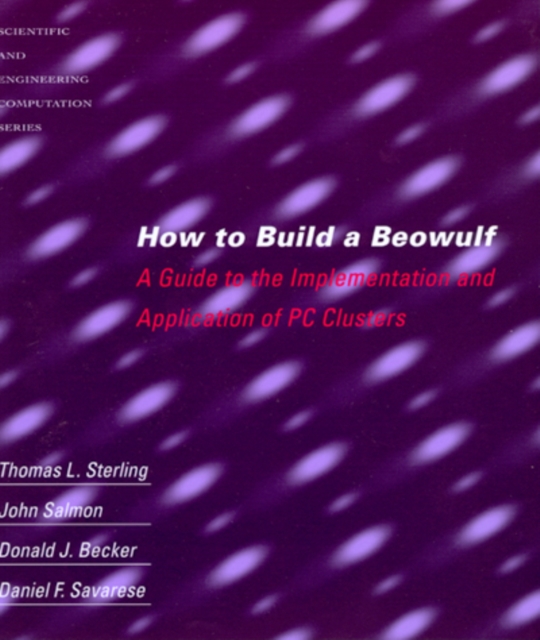
How to Build a Beowulf : A Guide to the Implementation and Application of PC Clusters PDF
by Donald J. Becker, John Salmon, Daniel F. Savarese, Thomas Sterling
Part of the Scientific and Engineering Computation series
Description
This how-to guide provides step-by-step instructions for building aBeowulf-type computer, including the physical elements that make up aclustered PC computing system, the software required (most of which isfreely available), and insights on how to organize the code to exploitparallelism.
Supercomputing research-the goal of which is to make computers that are ever faster and more powerful-has been at the cutting edge of computer technology since the early 1960s. Until recently, research cost in the millions of dollars, and many of the companies that originally made supercomputers are now out of business.The early supercomputers used distributed computing and parallel processing to link processors together in a single machine, often called a mainframe. Exploiting the same technology, researchers are now using off-the-shelf PCs to produce computers with supercomputer performance. It is now possible to make a supercomputer for less than $40,000. Given this new affordability, a number of universities and research laboratories are experimenting with installing such Beowulf-type systems in their facilities.This how-to guide provides step-by-step instructions for building a Beowulf-type computer, including the physical elements that make up a clustered PC computing system, the software required (most of which is freely available), and insights on how to organize the code to exploit parallelism. The book also includes a list of potential pitfalls.
Information
-
Download - Immediately Available
- Format:PDF
- Pages:262 pages
- Publisher:The MIT Press
- Publication Date:13/05/1999
- Category:
- ISBN:9780262287296
Information
-
Download - Immediately Available
- Format:PDF
- Pages:262 pages
- Publisher:The MIT Press
- Publication Date:13/05/1999
- Category:
- ISBN:9780262287296










